I have to be honest, I was really anticipating that this would be the best post from my trip to Iceland last weekend. Delta kinda stole the thunder from the rest of the trip with the $4500 voucher they gave me to move my trip back by a day. After getting such an outrageous voucher, I was even more excited about the trip, for one big reason: I was finally going to see the puffins.
The Atlantic Puffin
Ever since I was planning my first trip to Iceland in 2018 I’ve been fascinated with the cute little birds, mainly because they’re so adorable! They’re not just cute, they’re fascinating creatures with an interesting social structure.
Atlantic puffins live on the surface of the ocean most of the year, only returning to land to mate and raise their young (THEIR BABIES ARE CALLED PUFFLINGS AWWWWWWW). You can find puffins in many northern climes during the summer months, places like Maine in the United States, Scotland, the Faroe Islands, but the best place to spot a puffin is Iceland. Iceland is visited by 10 million puffins each summer!
Puffins form long-term relationships, are monogamous, and mate for life. The male typically builds a burrow into a cliffside (they actually create “rooms” in their burrows), the female lays one egg, and they take turns incubating. Their distinctive orange bill is actually only orange during mating season, after which it reverts to a gray color for the majority of the year.
Puffins are skilled hunters. They can fly upwards of 45mph and dive 200 feet underwater to find their food, usually small fish called sand eels. Their unique beak allows them to hold these fish across their beak instead of regurgitating food for their offspring. Because they dive underwater, their bones are not hollow like other birds, so their flight looks almost like a bat compared to the more graceful flight of other seabirds like the gull.
Ok, science lesson over. Puffins are cute. I wanted to take pictures of puffins. I arrived in Iceland and met up with an Icelandic buddy (with whom I went to the volcano in March) and we set out for the Westfjords, one of Iceland’s most remote and beautiful regions.
Making our way to the westernmost point in Iceland
My friend Petur is a wonderful photographer and it was good talking photography with him as the kilometers flew by. Since this trip was so photo-focused, my luggage was mostly photography gear. I had two camera bodies (the Fuji GFX 100S and the Sony Alpha 1) and five lenses with me, including the massive Sony 400mm f2.8 G Master. No matter how close we could get to the puffins, I was ready.
As we turned west into the westfjords, the Icelandic landscape changed from the undulating hills of the western central plains to raw, jagged mountains. We drove up and down fjords, eventually stopping to see an abandoned steel ship at the end of a fjord.
Clouds were rolling in but the forecast looked better the further west we got. We pressed on and pulled off to see a red sand beach. I would normally just call this “a beach” but it’s unique in Iceland because almost every other beach is volcanic with black sand. As we drove down to the beach, the clouds broke and it turned into an absolutely beautiful summer day. Families were walking on the beach with pets in tow, enjoying the weather and Iceland’s recent relaxation of mask rules.
I looked around the area and saw a church that looked almost exactly like Búðakirkja on the Snaefellsness peninsula, which I’ve visited many times. I had to get a picture of it!
It was a beautiful landscape. I turned my eyes to the west and saw more cliffs, with clouds seemingly falling off of them. There were puffins there, I knew it.
Látrabjarg: the land of the puffins
Our long drive (roughly five hours from Reykjavik) ended at Látrabjarg, a promontory at the westernmost point of Iceland. It also happens to be one of the most amazing bird sanctuaries in Europe, with millions of birds calling it home. The other birds were wonderful, truly.
But I was there to see puffins. Not from afar, like during my first date trip to Iceland in May. I wanted a closer look (while keeping a respectful distance away, of course).
We walked up the sidewalks of Latrabjarg. We were there in the middle of the afternoon, and from what I understand that’s not the best time for puffins on the cliffside, as they usually hunt during the day. Nevertheless, we soldiered on, and suddenly WE SAW ONE.
Gyaaaaaah it was so cute! And, yes, puffins are actually quite small. In my head I first imagined them to be the size of a small penguin (because awww), but they’re only a few inches tall, roughly the size of a can of Coke. I switched to a longer lens for a closer look while respecting the ropes (placed aware from the cliffside because puffin burrows are just beneath the surface and humans risk collapsing them).
We kept walking, hoping for some views of puffins next to their burrows on the cliffs. And boy did we find them!
I put the massive 400mm lens onto my Sony Alpha 1. The puffin pictures brought tears to my eyes. I finally got to see my puffins.
I first focused on what I gathered was a pair of puffins hanging out outside of their burrow. They were seemingly curious, looking around, walking into and out of their burrow, and seemed to just be enjoying a lovely afternoon out on their front porch. I moved around a bit for another perspective.
One of the puffins, who I named Eldrick for some reason, noticed.
My presence didn’t really bother them, though. Puffins don’t have many predators so they’re not easily frightened by the presence of humans. Eldrick went back to looking around the cliffside.
At this point my friend Petur grabbed a picture of me and my ridiculous 400mm lens in action.
I saw another pair of puffins up the cliff a bit so I carefully made my way over.
Puffins are somehow graceful and elegant while at the same time clumsy and hilarious. The more I watched them the more I fell in love with them.
This one, in particular, was doing a pretty poor job of hiding in the bushes.
It then pruned itself, which is actually more interesting than it sounds. In 2019, researchers recorded puffins using sticks to help them scratch their bellies, rare video evidence of an animal using tools. No tools today though, just normal beak pruning.
Another pair appeared from their burrow, the male proud of the plants he had acquired and the female not really acting particularly impressed. In my head I imagined that she was lecturing him about messing with plants while their puffling needed fish.
The female then posed beautifully against the cliffside, her way of telling her husband that the argument was over and he needed to go fish. (the husband departed soon after)
Close-ups of puffins
I took a quick break to attach the 2x teleconverter onto my 400mm lens, making it an 800mm f5.6, meaning I could get much closer to my new friends without moving any closer. It helped me take some really wonderful close-up shots. I spent hours looking at the detail of these majestic birds.
Petur had walked up the cliff a little bit and was calling for me to come over to where he was. I saw two little puffins on another cliff and had to capture them in all their majesty before I made my move.
The kissing puffins
Petur pointed out two puffins relaxing on some grass next to a 400m drop into the ocean.
I don’t know why I’m this way, but I immediately named them Pedro and Genevieve. The names just fit, I dunno.
They were enjoying the weather and didn’t appear bothered by all of the attention they were suddenly receiving.
It was time for pictures of Pedro and Genevieve.
Genevieve posed majestically and I loved the grass framing her face (important note: I have no idea if this was actually a female or not).
But suddenly they both stood up and they started kissing. Ok maybe not kissing but puffin pairs are known to touch beaks to strengthen their bond. So actually yeah, I will call it kissing. I snapped pictures as quickly as I could!
And then Pedro gave me a look as if to say, “Hey man, do you mind?” while Genevieve sheepishly looked away.
They then posed majestically into the wind.
Genevieve then yelled at Pedro. He played dumb as if he didn’t realize that he forgot to get milk at the grocery store but his feathers were clearly ruffled.
Pedro walked around a bit and then went in for another kiss but Genevieve apparently wasn’t having it, angry about the milk I guess.
Pedro stood there for a bit, and I guess he wanted to act all manly for the camera so he intimidatingly spread his wings to counteract the rejection.
Quick author’s note: I’m not an ornithologist. I have no idea if the names and genders I assigned the birds was correct. The scene before me played out like a typical spat between a couple so I gave them names and backstories accordingly.
What a day!
Satisfied with the 2600 puffin pictures I took, Petur and I made our way to a guesthouse an hour or so away. It was a wonderful day, full of puffin wonderment. Ever since I have not stopped bugging my friends with random puffin facts.
As I tried to get some sleep with the midnight sun glaring into my room I felt an overwhelming sense of gratitude. I was so glad the world was reopening and that I had been able to visit Iceland three times in 2021 so far. I was happy the birds lived up to their billing and were as cute and had as much personality as I had hoped. I can’t wait to go back to see more!
I hope you enjoyed these pictures! Tell me which was your favorite in the comments below!


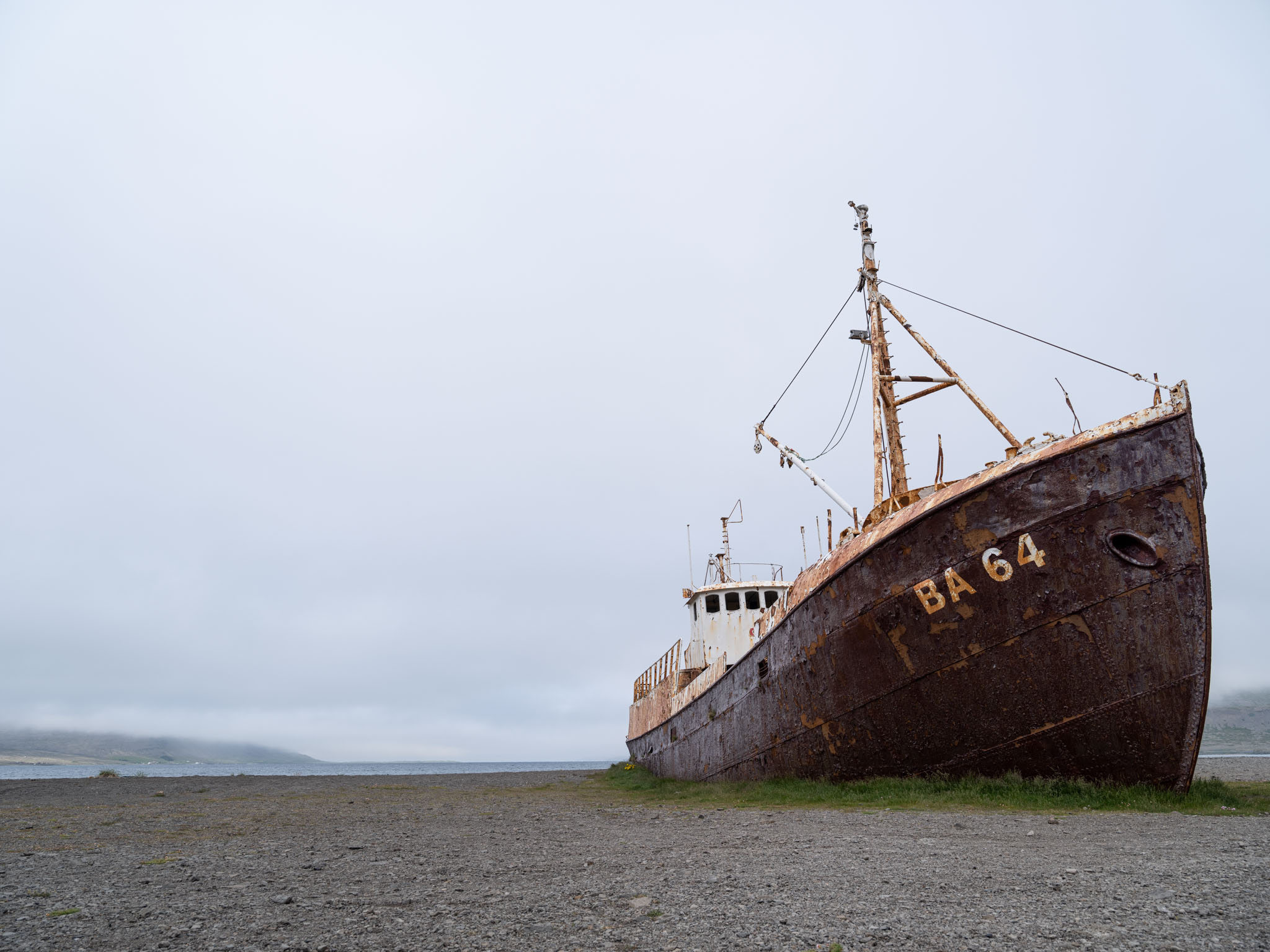
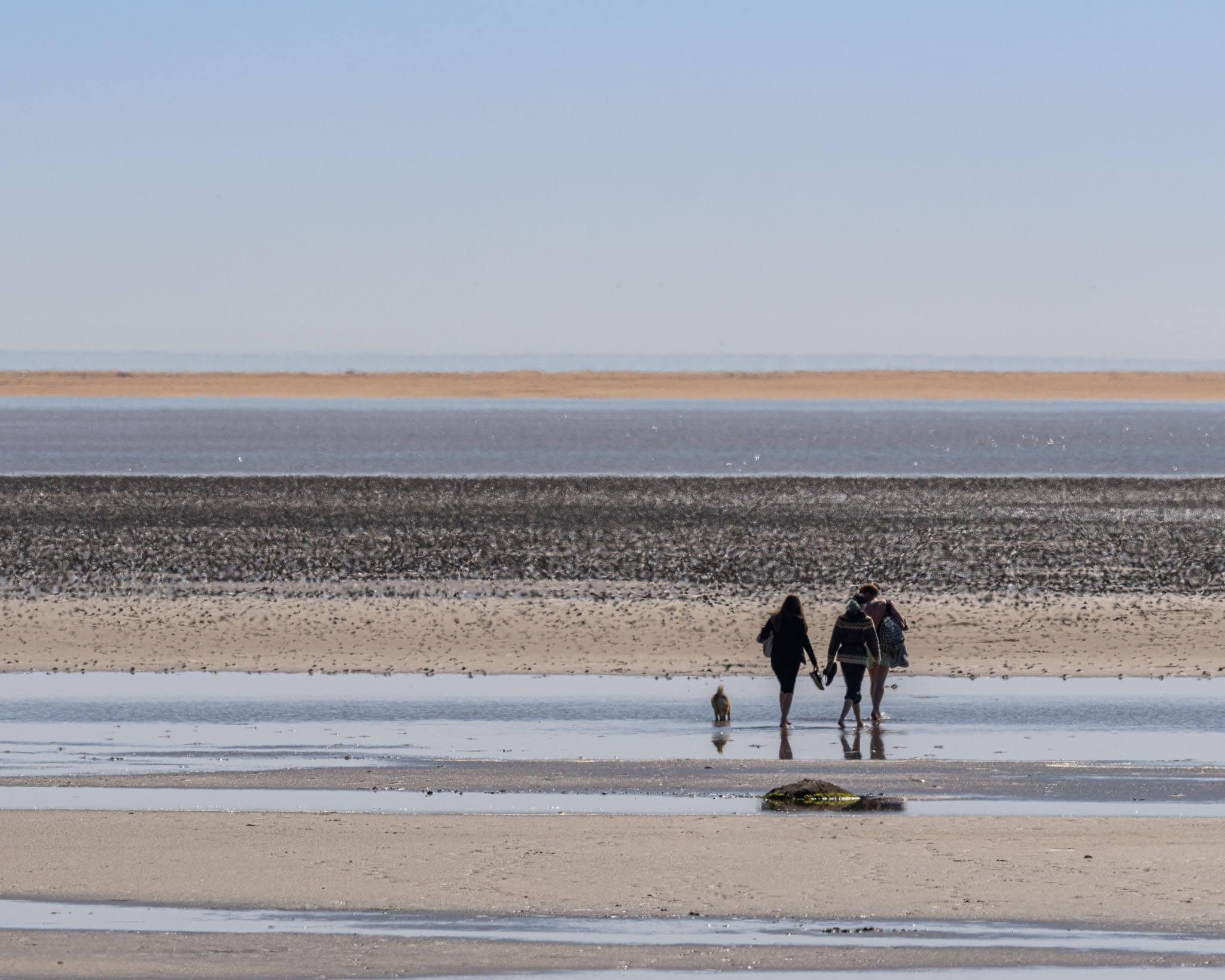

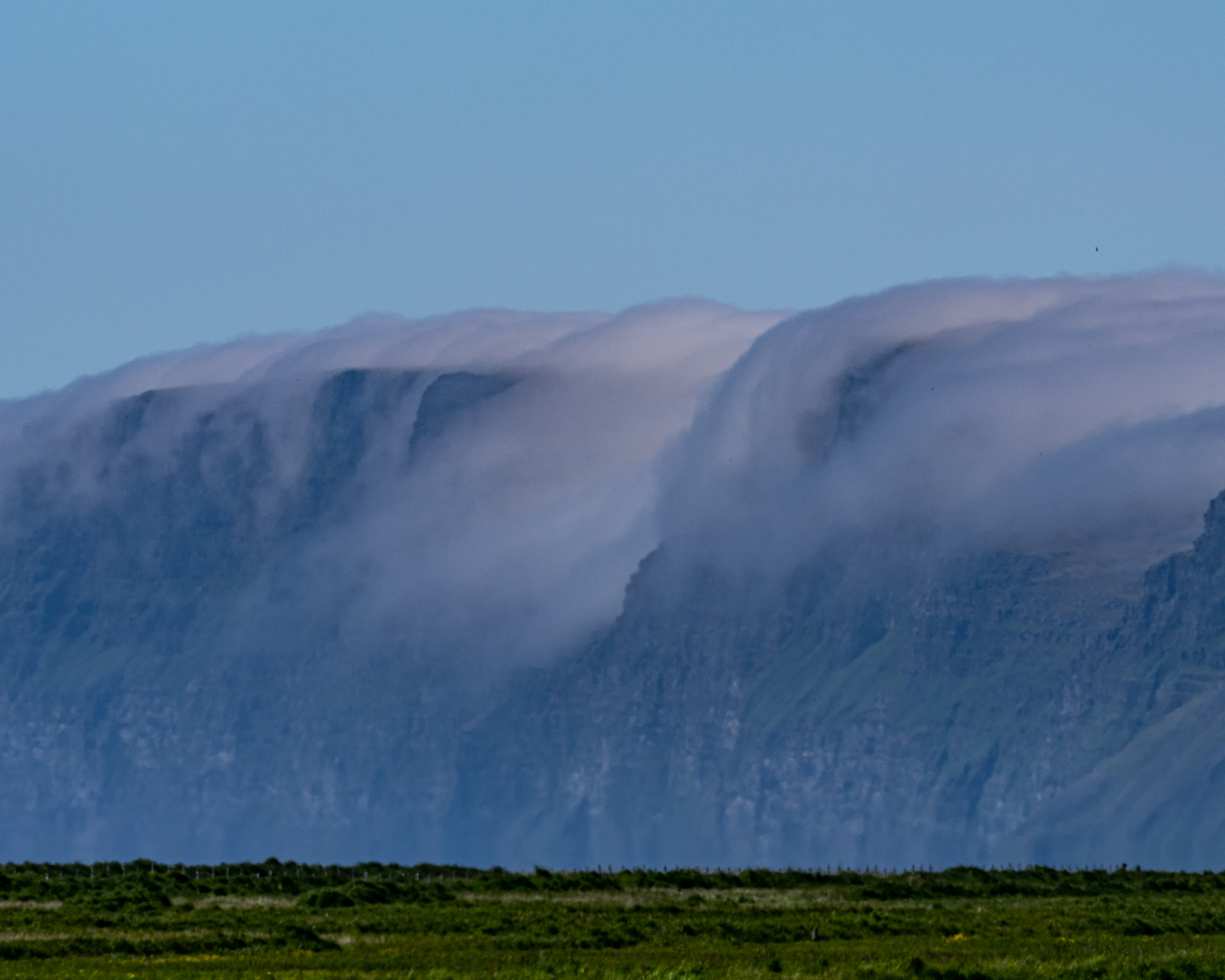

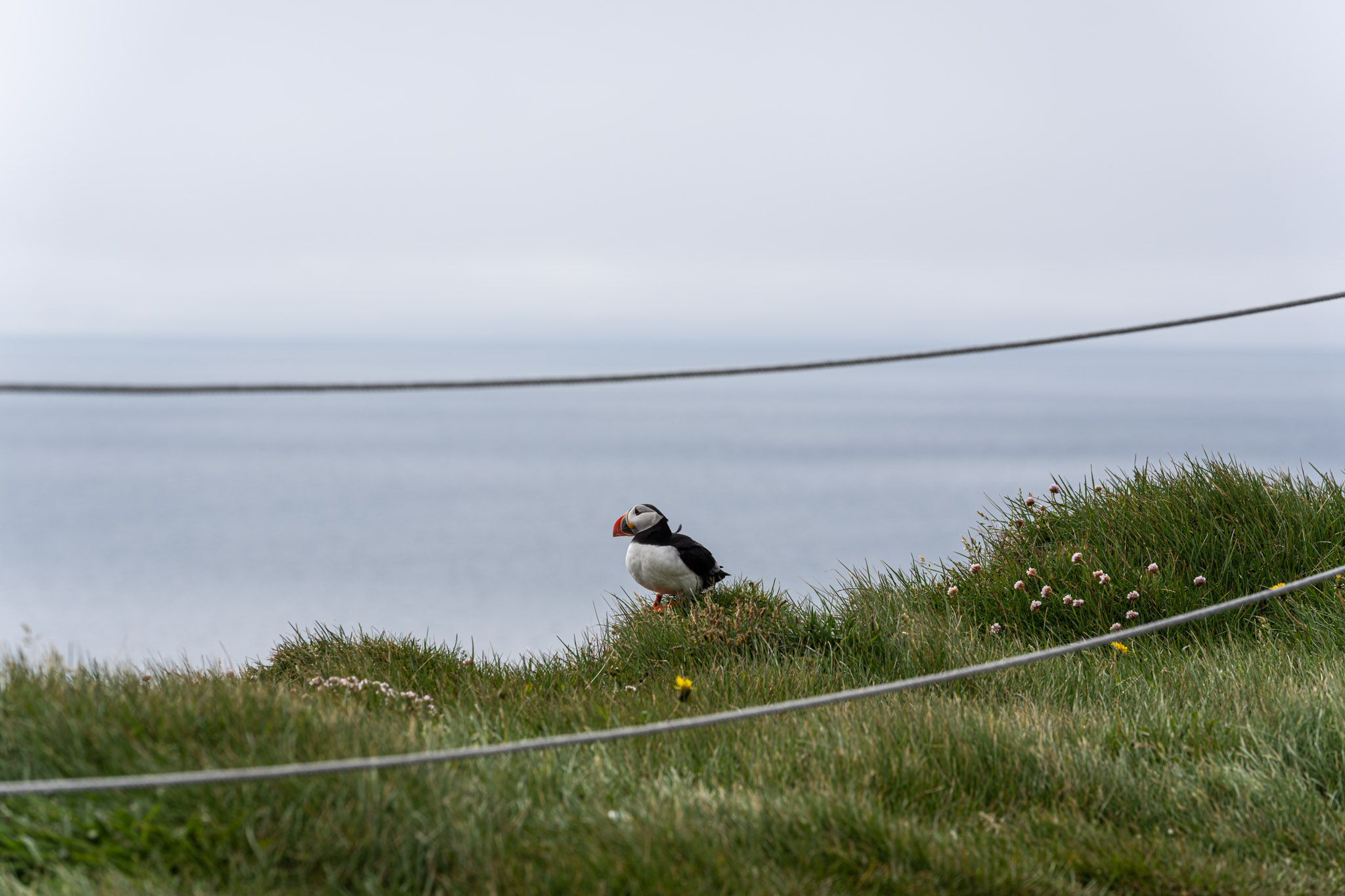



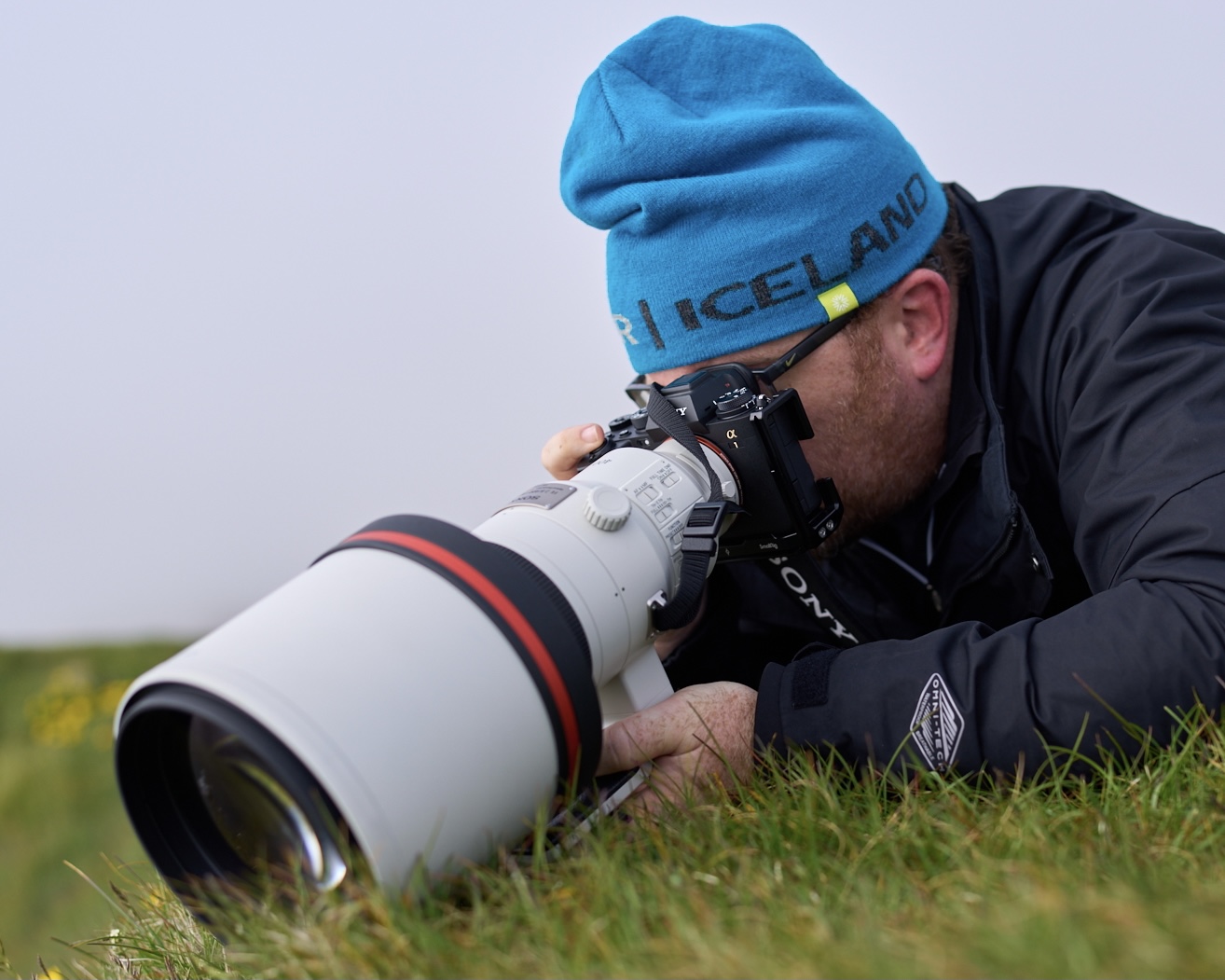

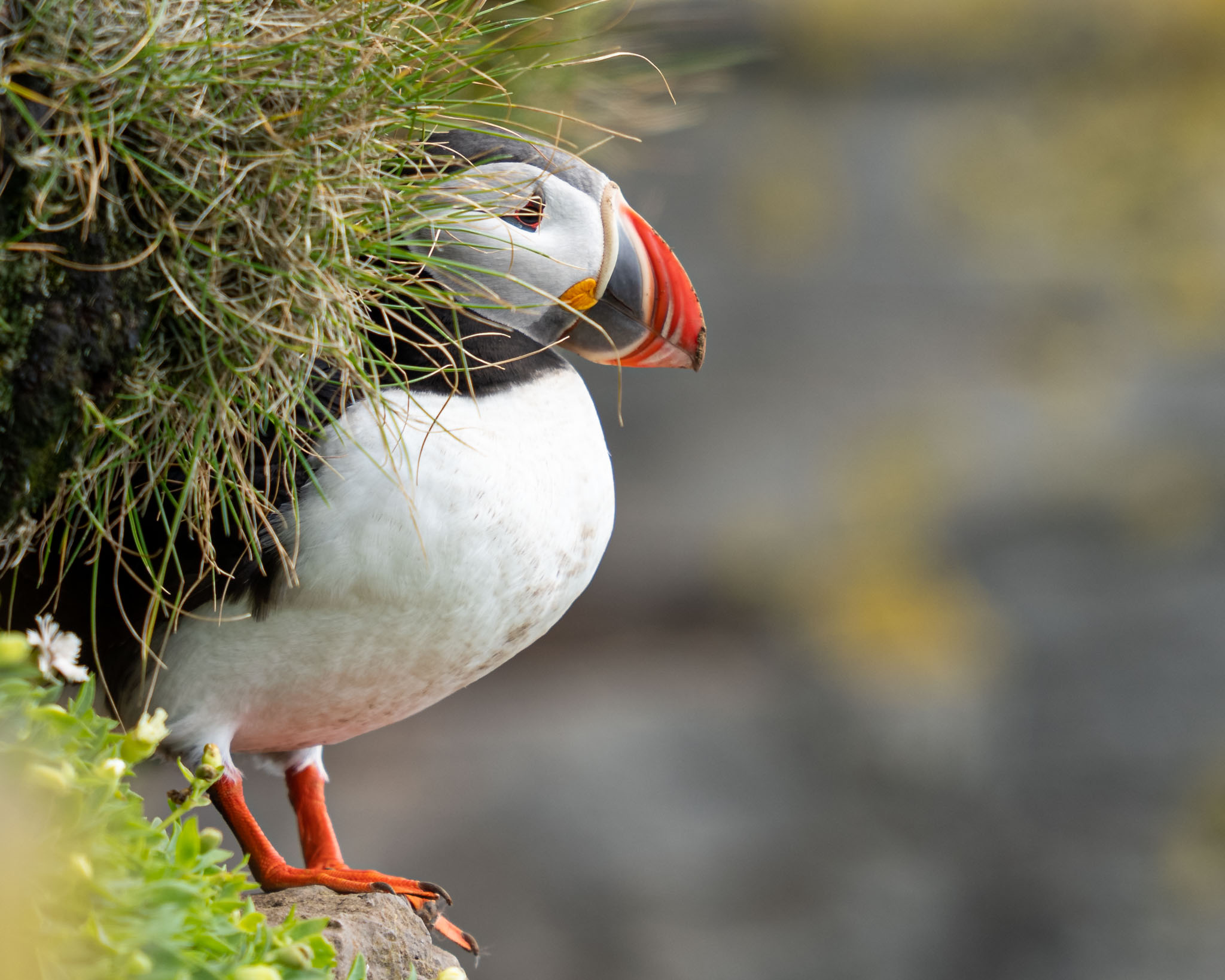
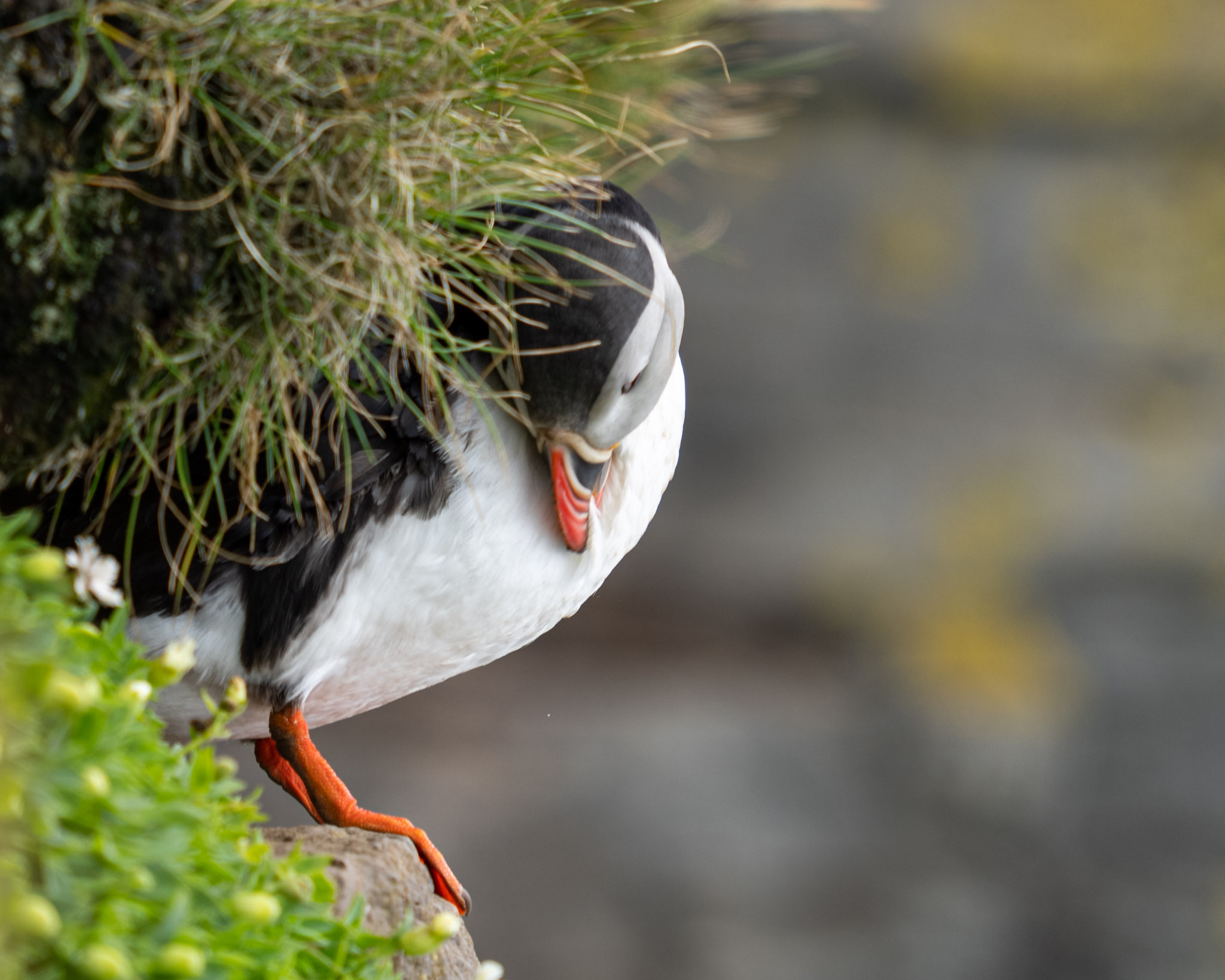
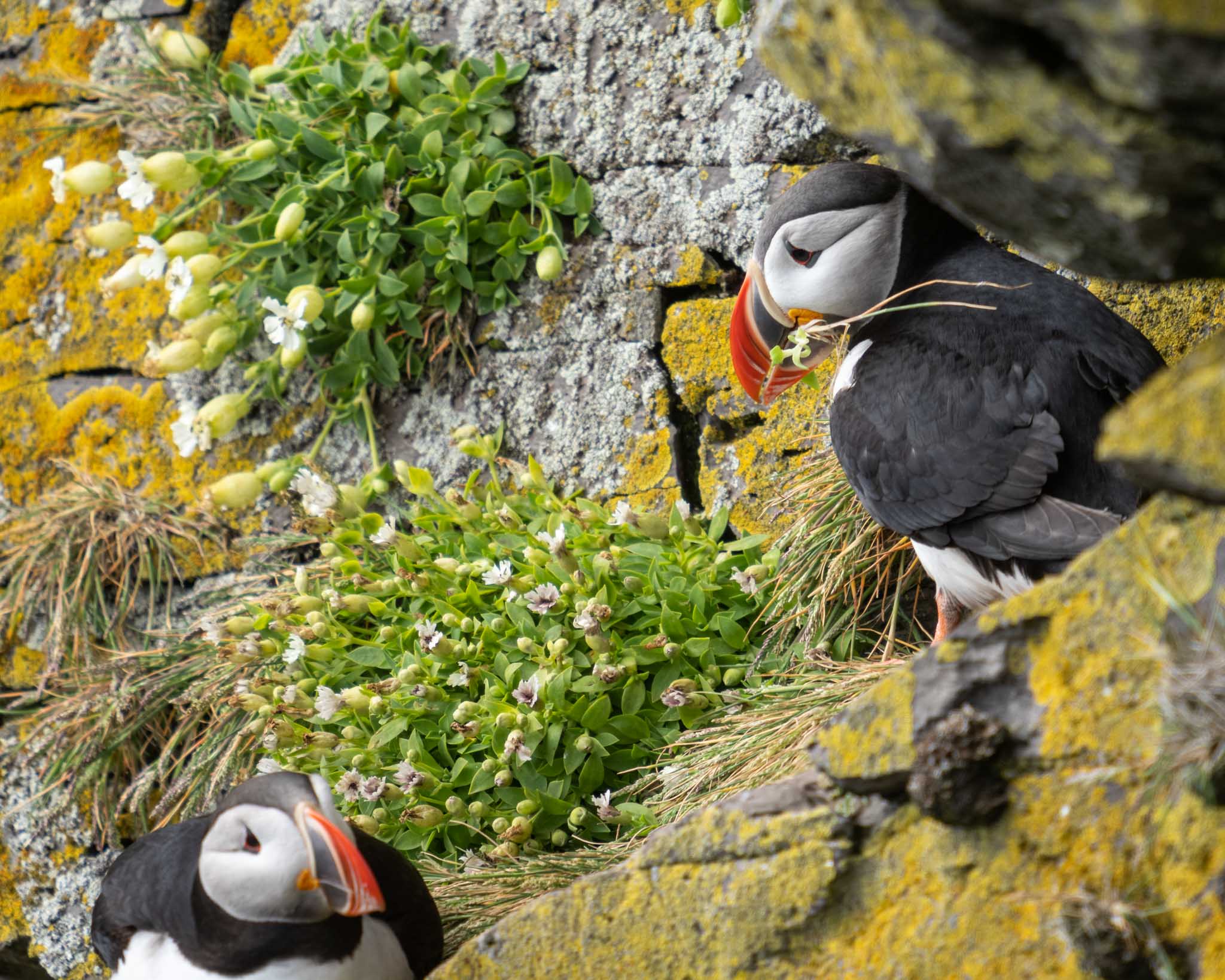
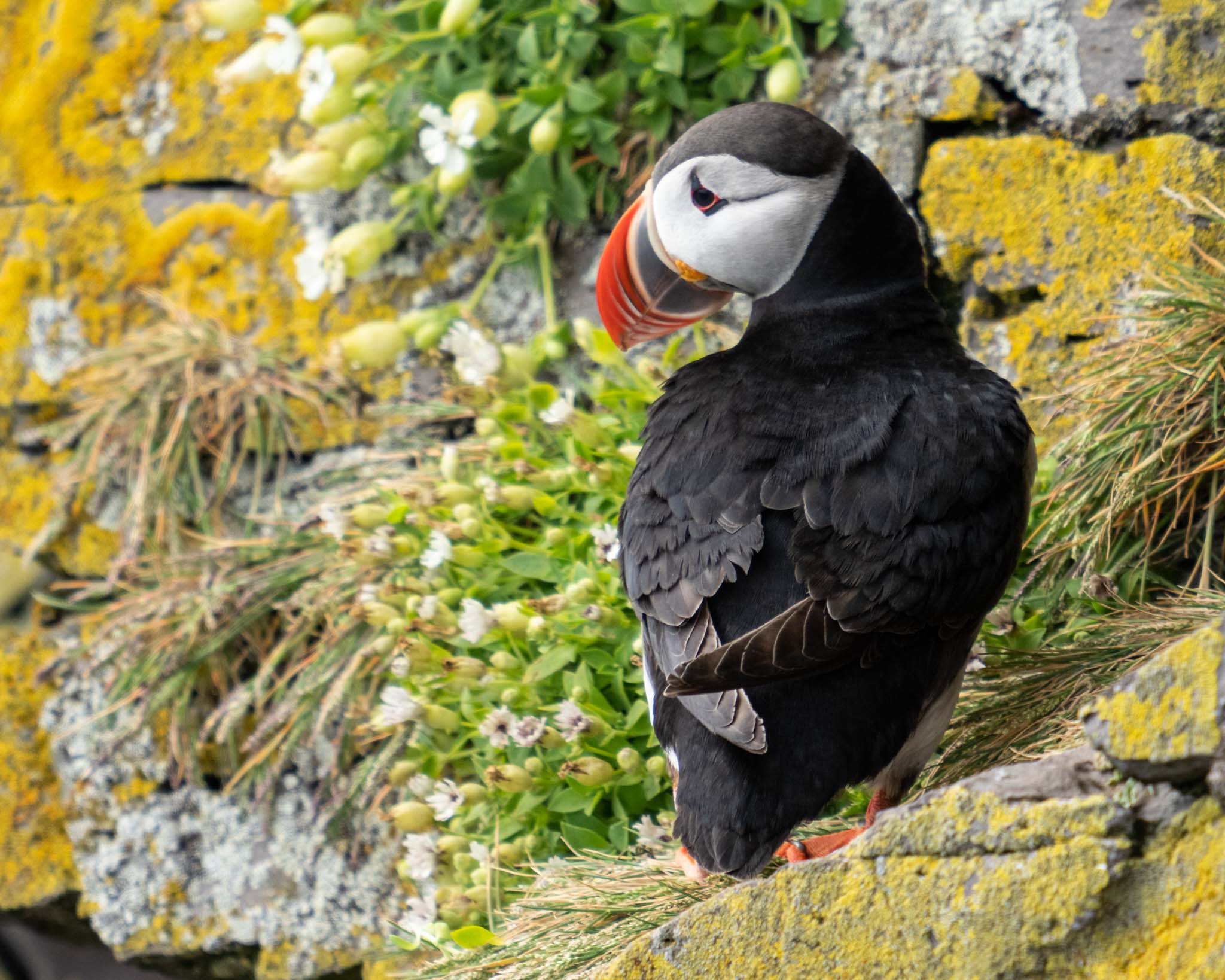
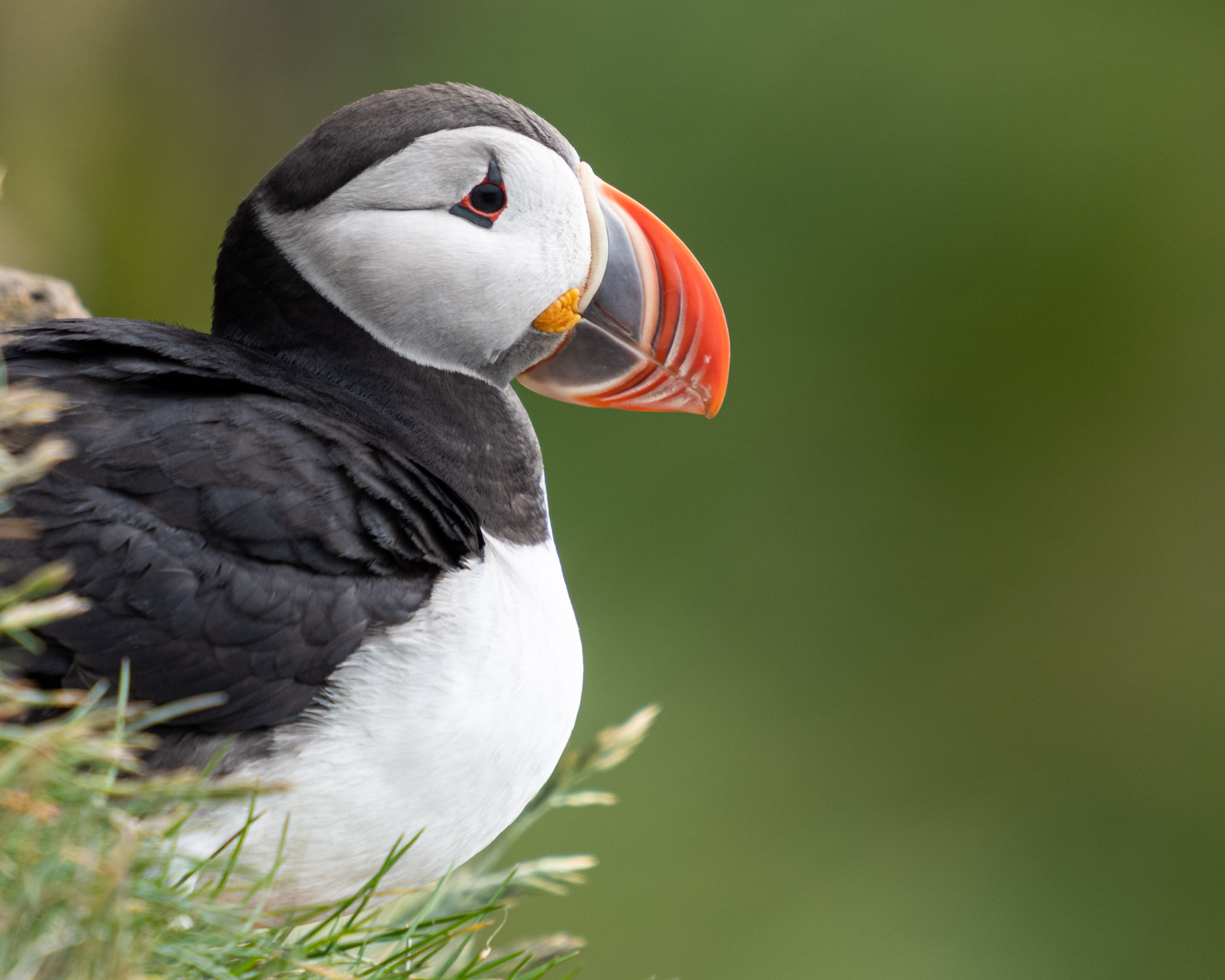
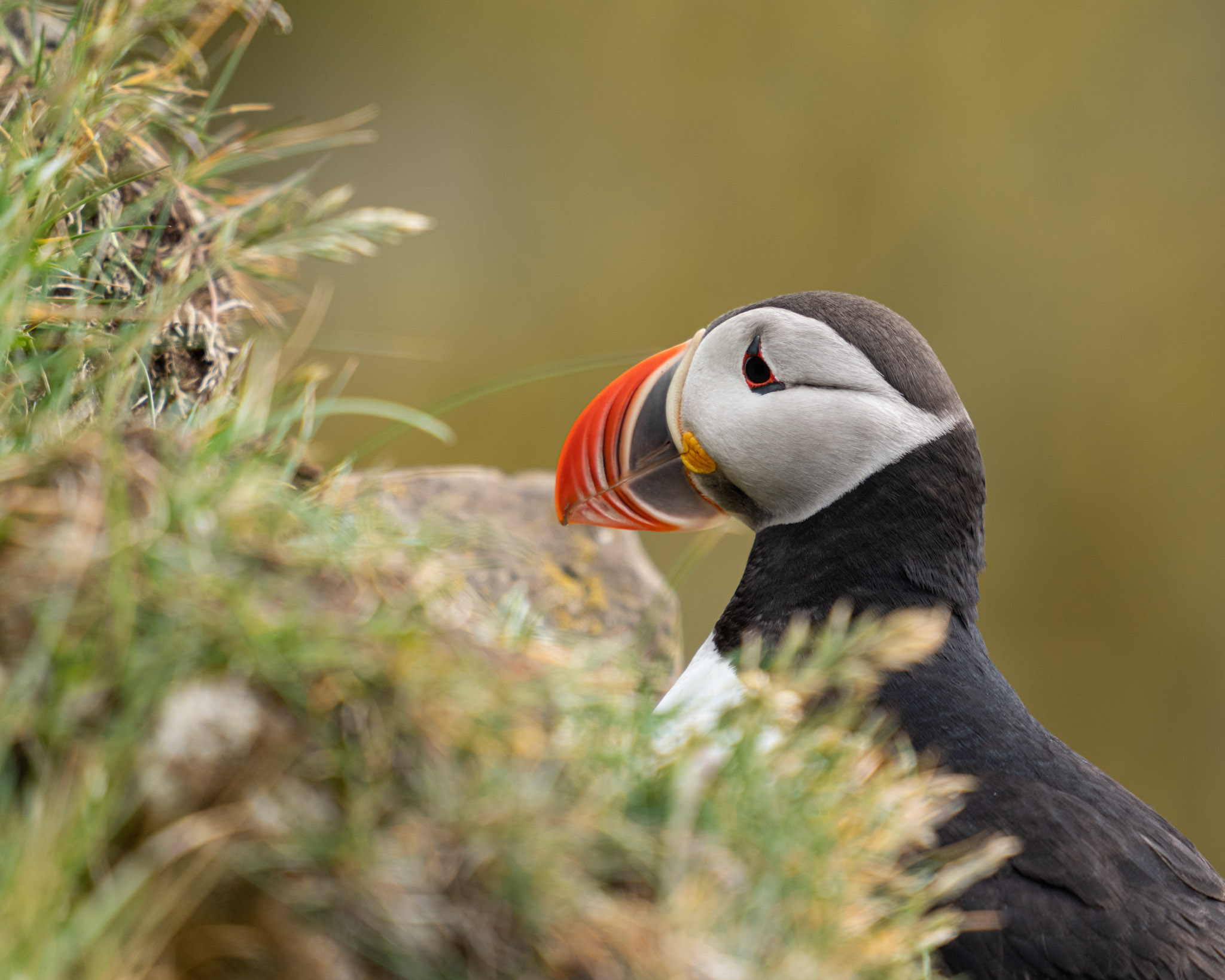

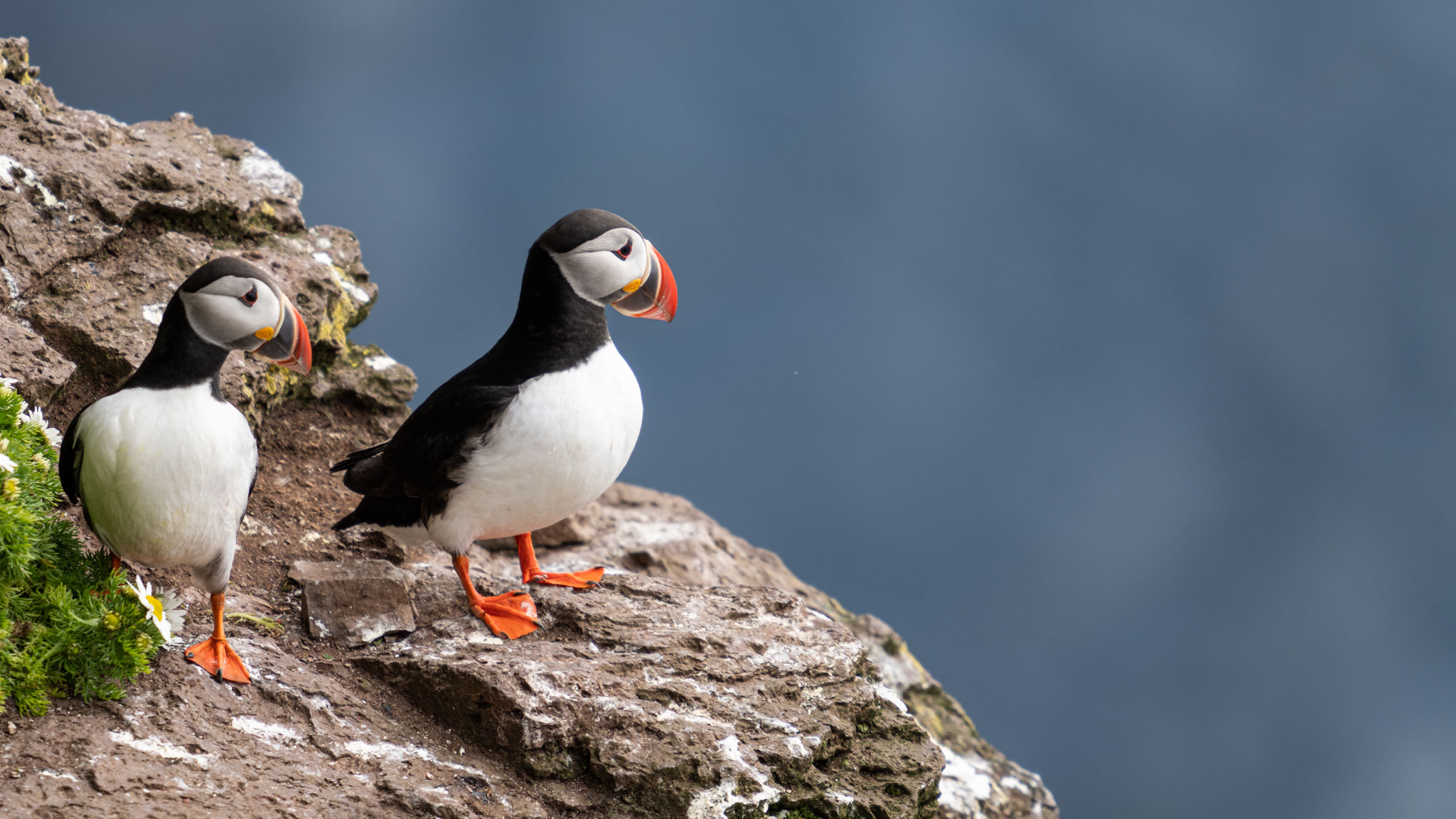

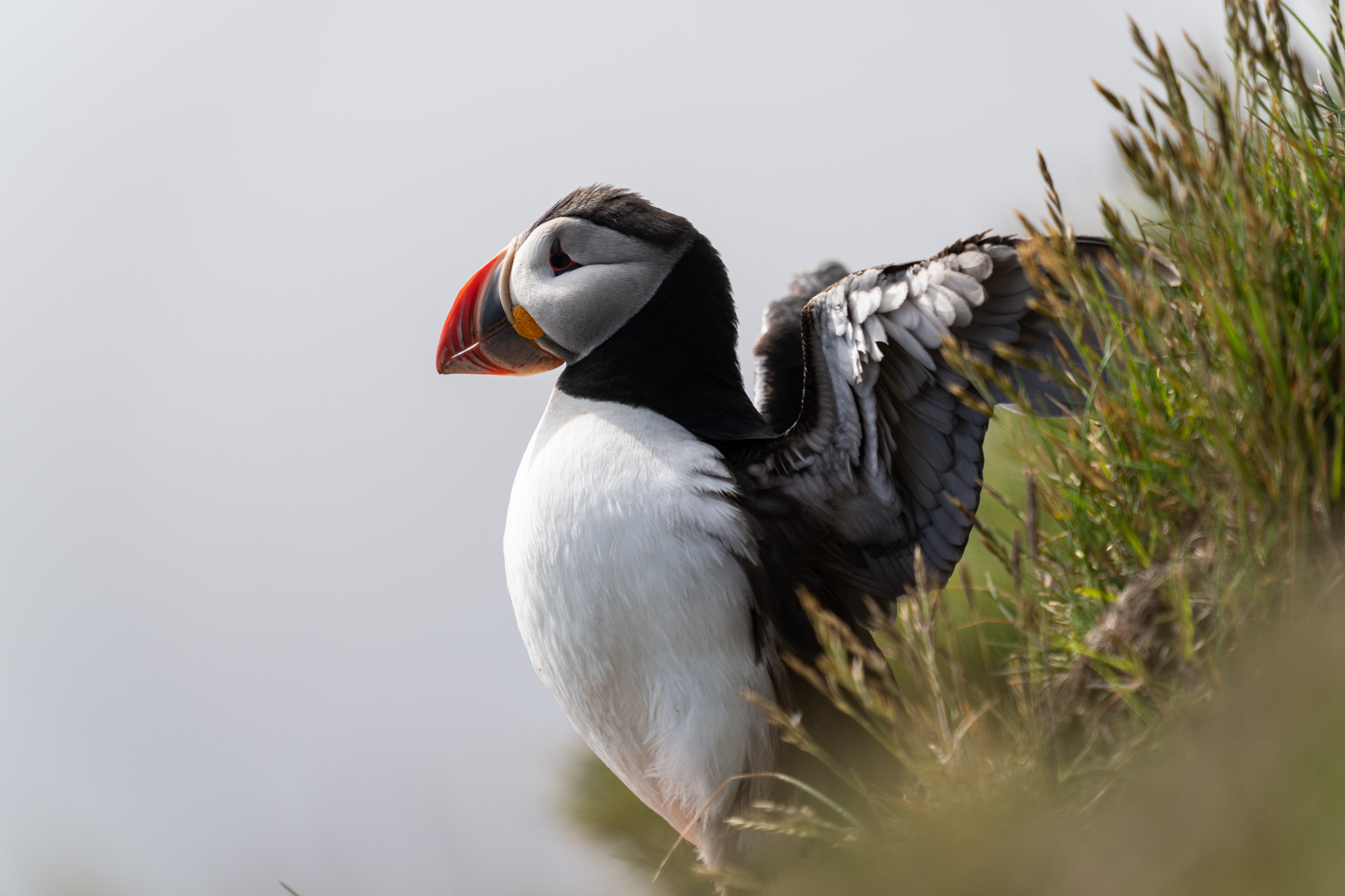
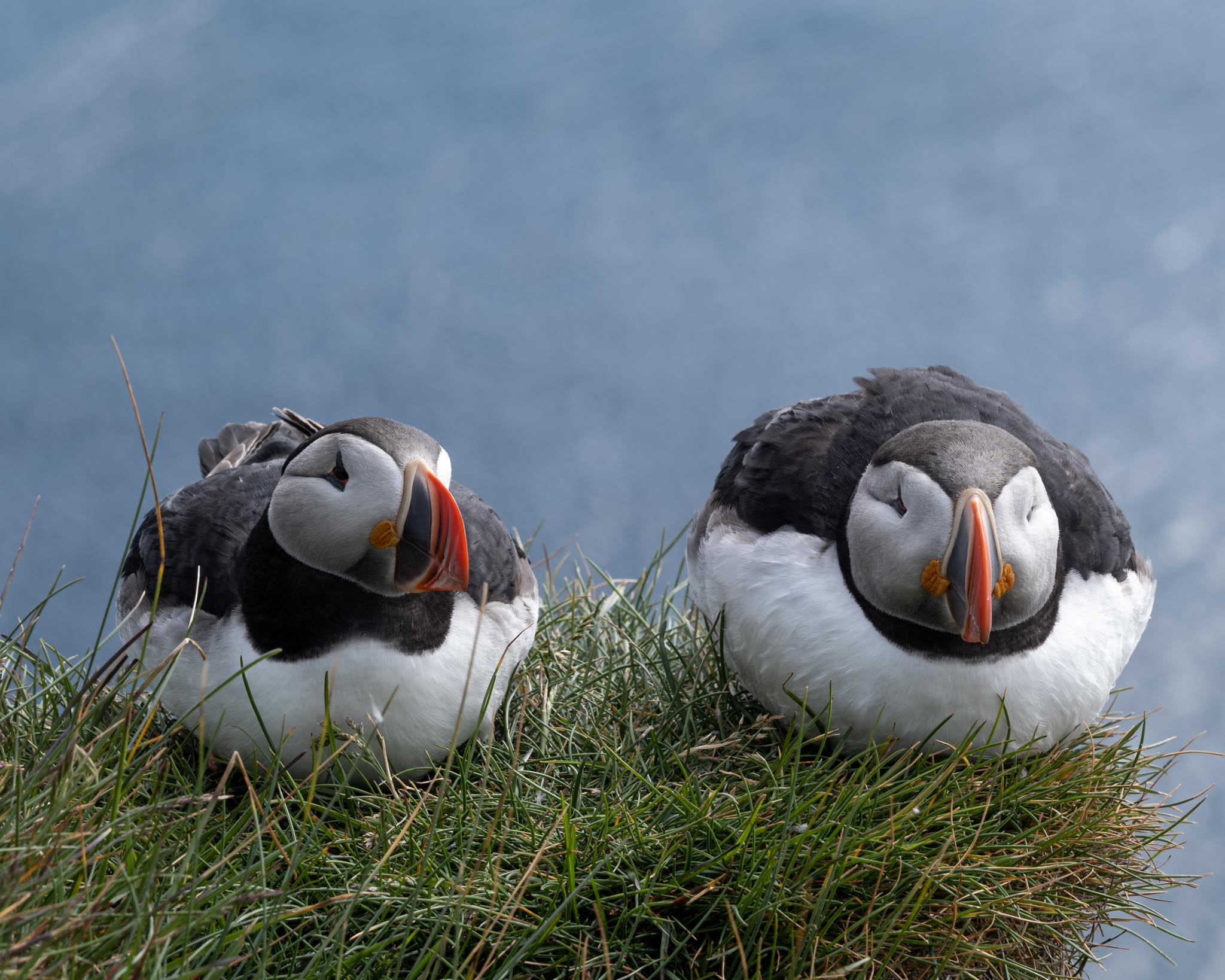

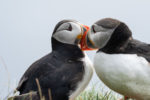
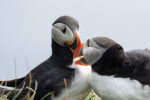

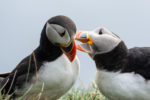

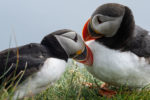
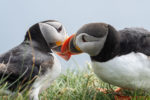

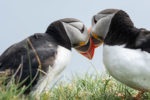
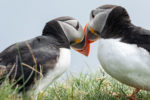
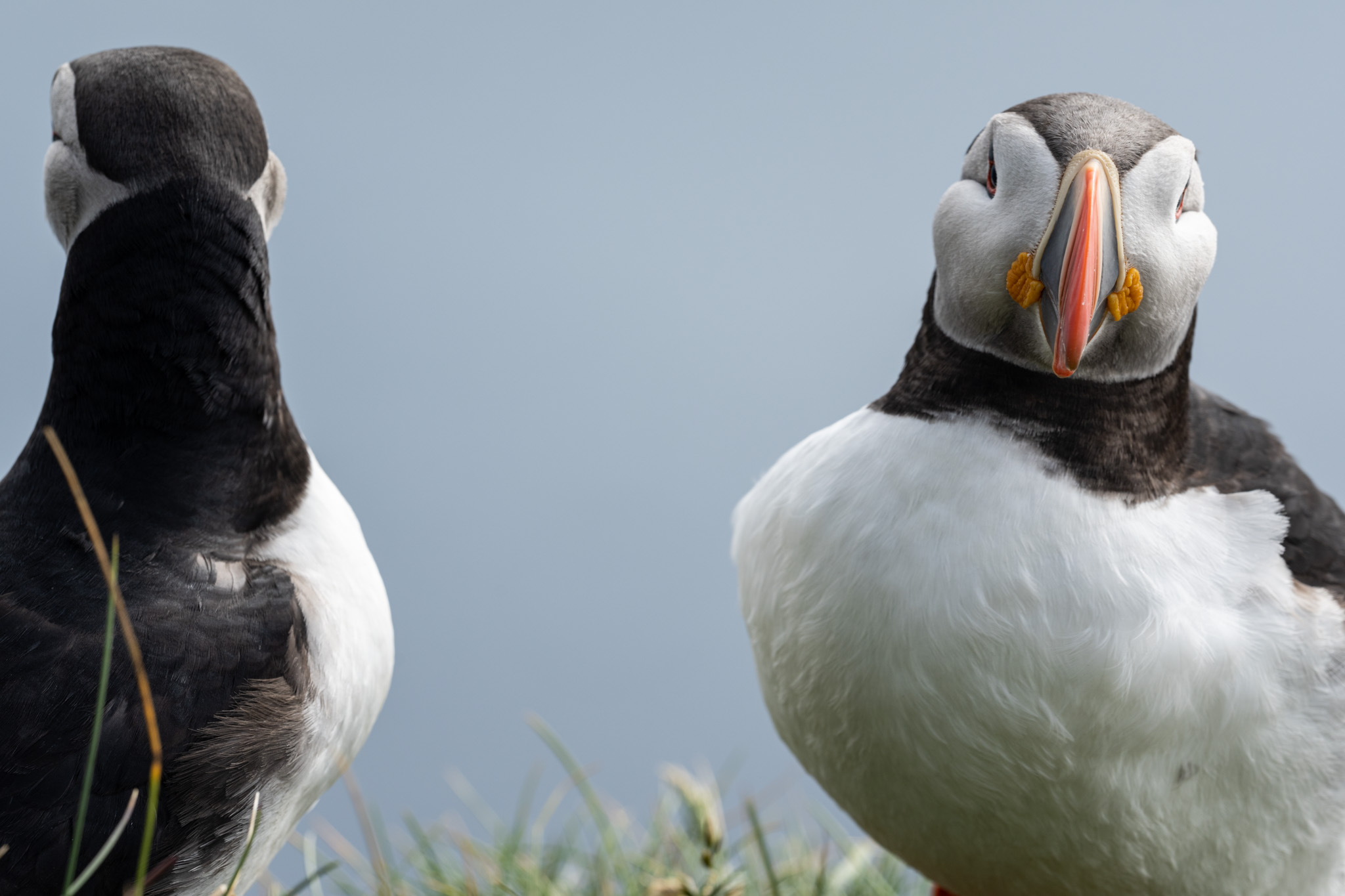
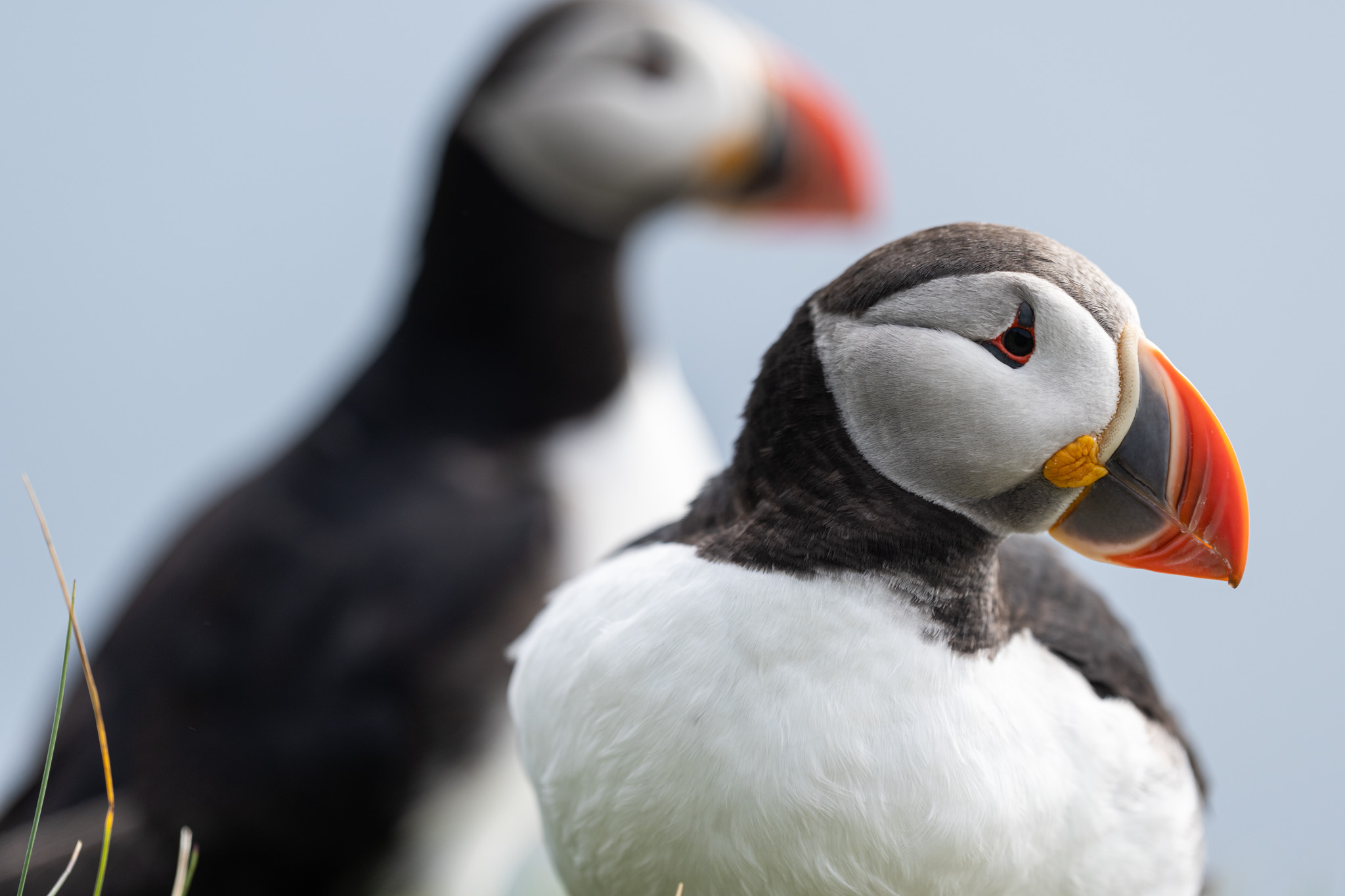
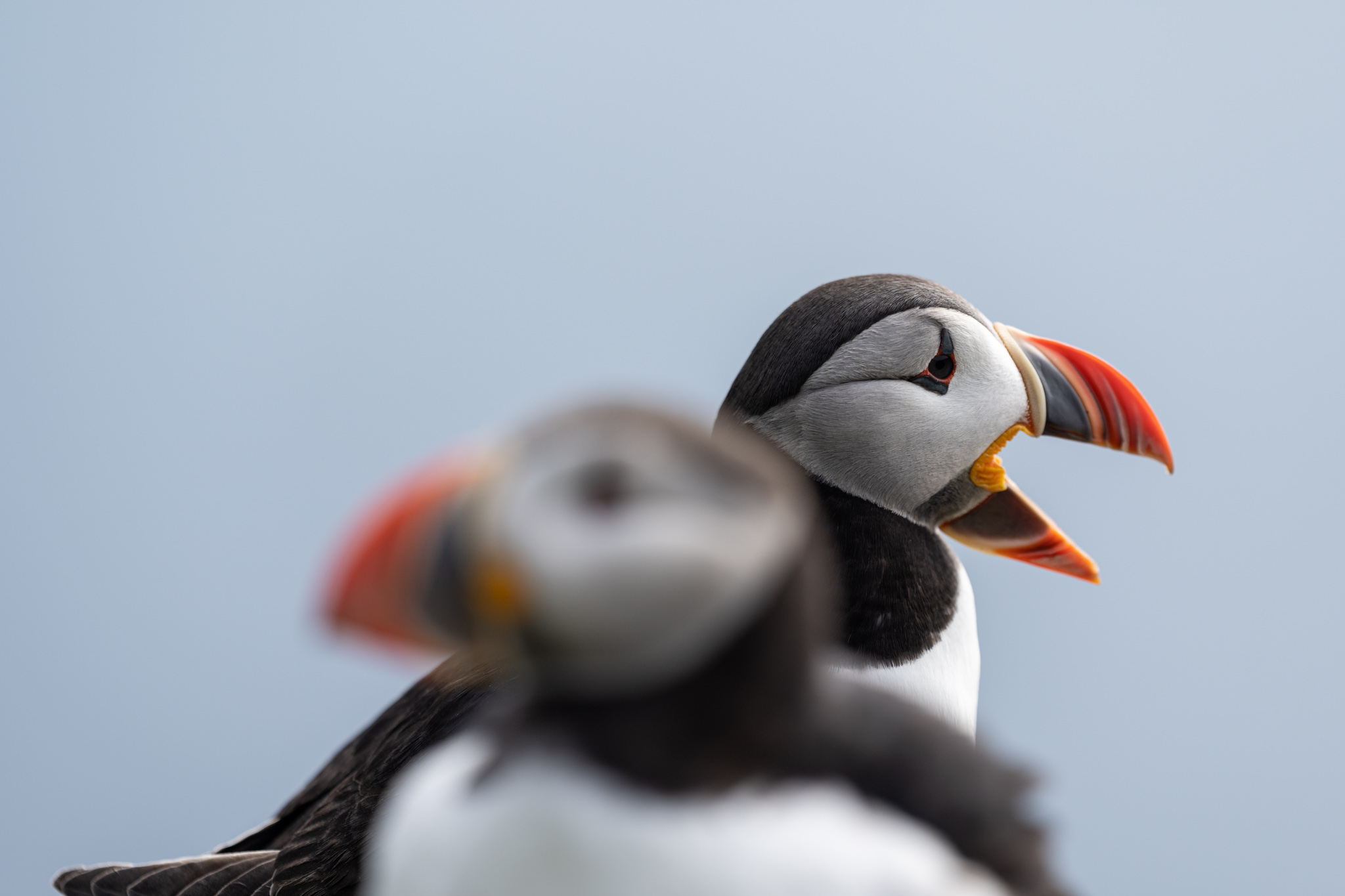
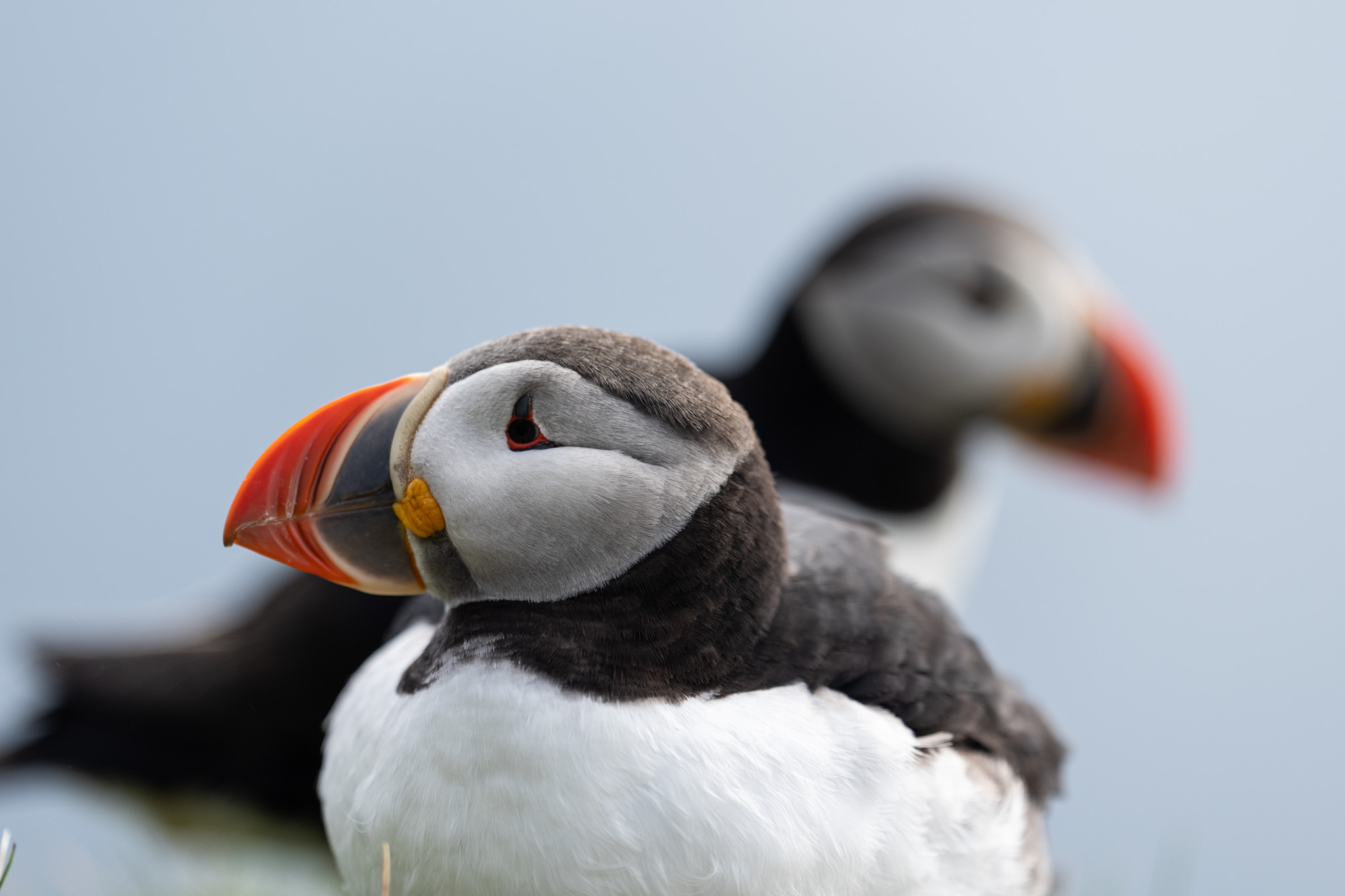

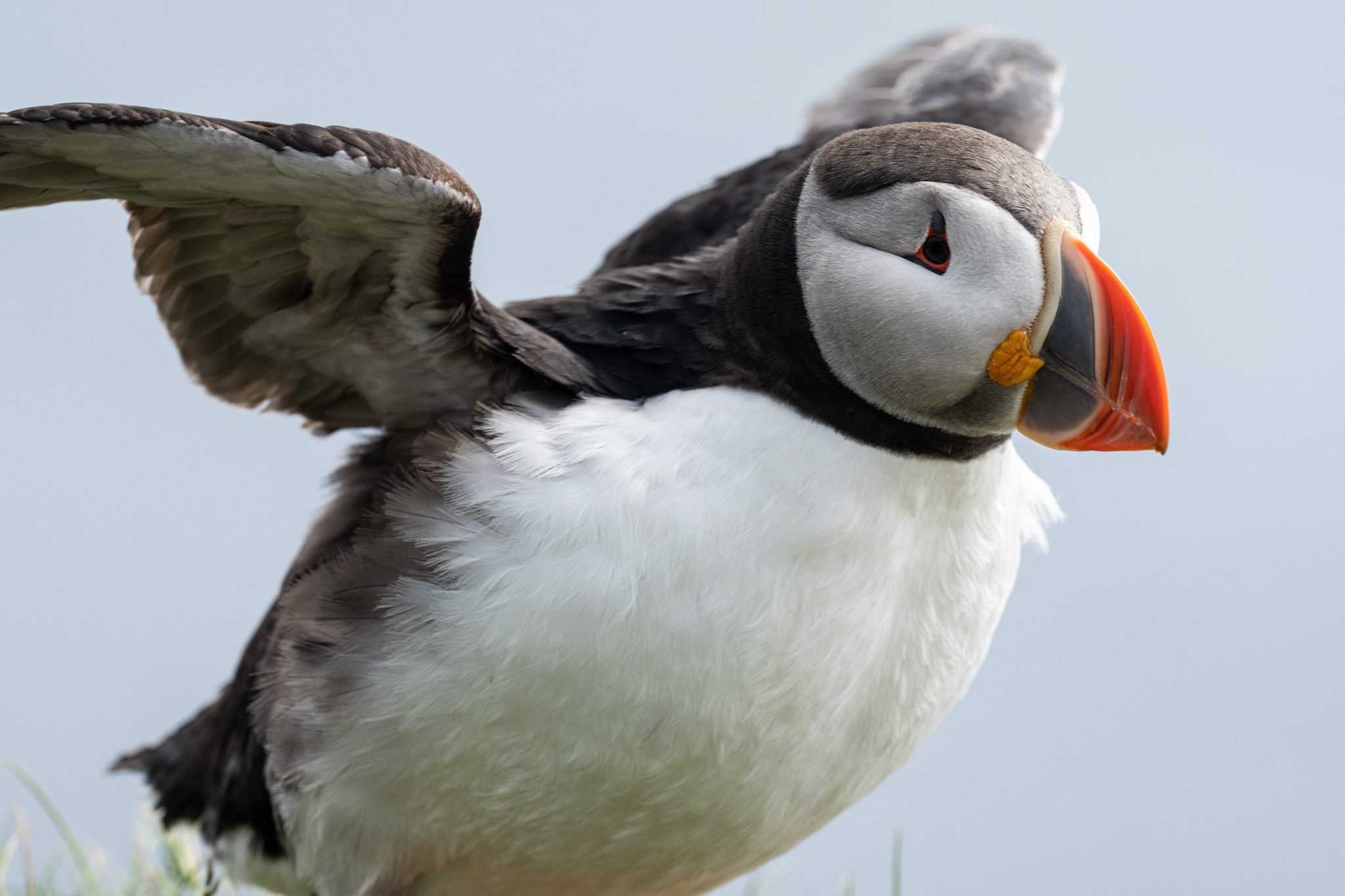

Fantastic shots! Thanks for sharing the little trip with us!
Amazing shots! I’ll be heading to Iceland in 6 weeks, and your photos have me very excited for my visit!
Fantastic, have a great time! Let me know if I can help.
Absolutely stunning images. Loved all of them. Did you buy that monster lens or rent it? I know it costs a cool 12k 🙂
You are to puffins what I am to sea otters
That’s the nicest thing you’ve ever said to me.
Latrabjarg is a wonderful place. I went there in 2014 and spent two evenings shooting puffins (also razorbills, murres etc. but mostly puffins). Agree they are just adorable and you just can’t stop shooting. The interplay between the couples is fun to see and photograph. Wonderful experience.